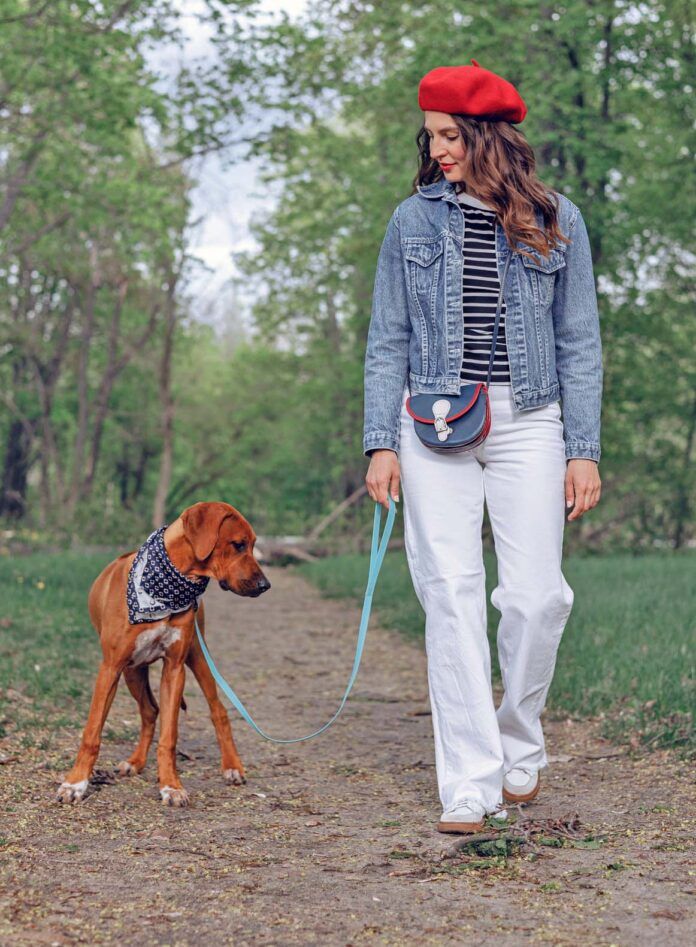For a new puppy who is about 8 weeks old, keep walks to 5 or 10 minutes. Let your puppy choose the speed, and take breaks as needed. If she is tired and doesn’t want to walk, carry her home.
As your puppy gets older, she can gradually take longer walks. A 12-week-old puppy can walk about 15 to 20 minutes. Again, allow your puppy to choose the speed and take plenty of breaks for sniffing. Avoid trying to pull the puppy.
Puppies are still developing their muscles and bones, so long walks can be too hard on their bodies. If you must walk on pavement, keep walks shorter. Walks on grass or dirt are easier on your puppy’s growing bones than pavement.
Increase Walks as Puppy Grows
By 16 weeks of age (4 months old), most puppies can go for 30-minute meandering walks. Increase the time to 45 to 60 minutes as your puppy reaches 6 or 7 months of age.
Hold off on true hikes or long purposeful walks on pavement until your puppy has physically matured.
Long Walks Stress Puppy Bodies
Your puppy’s bones are still growing. She will become physically mature at around 12 months of age for small dogs and around 18 to 24 months for larger dogs. Puppy bones have soft “growth plates” at the ends where new bone is produced as the puppy grows. The growth plates are not as sturdy as mature bone, so they are easier to damage. Even worse, an injured growth plate can cause the bone to stop growing early. This can result in lifelong orthopedic problems.
Free Run Instead
The best exercise for puppies is safely free running. Let your puppy choose her own adventure and play at her own pace.
If you have access to a fenced yard, allow your pup to wander freely, choosing her speed and direction. Stay with her! She will naturally regulate her activity, going fast when she wants to and slowing down when she gets tired.
If you don’t have a fenced yard, let your pup play on a long line of around 15 feet for young puppies in a safe space. Hold the end of the line while she plays, keeping it slack as much as possible.
Longer Walks Will Come
It can be tempting to take your puppy for a long walk to wear her out but resist the urge. Instead, treasure these meandering strolls while her body grows and matures. Try to see the world through your puppy’s eyes and enjoy her antics as she zigzags around the yard and explores her world. Let her learn about the world.
Leave your puppy home and take your older dog or go for a solo outing when you want to take a more purposeful walk and cover ground. When your puppy has matured, you’ll have plenty of time for hikes and long walks, and those healthy joints you nurtured when your dog was a puppy will last a lot longer.







This is written as fact, but no studies are cited. If it’s opinion that’s fine, but let’s be transparent.
The writer is an LVT and knows the subject matter well. Beyond that everyone with reasonable familiarity with young animals knows you must go easy on their joints while they develop. This is not “opinion,” and is most definitely based upon established science … and you know it, so stop being “holier than thou.”
If walking puppies at 8 weeks old it is advised to keep in your own back yard until they are fully vaccinated. Parvo is a highly contagious virus that is very costly if not caught in the early stages and very well could be deadly